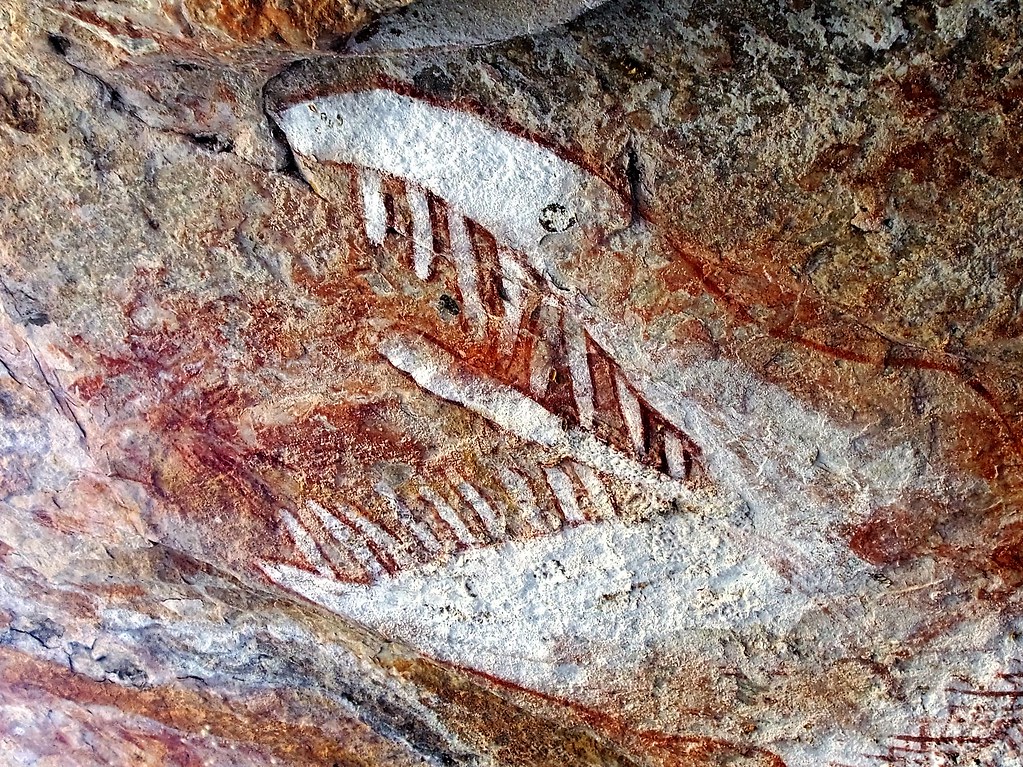#aboriginal rock art
Aboriginal Art - Western Arnhem Land Rainbow Serpent head by Chris Borough
Via Flickr:
Rainbow Serpent head The following has been sourced from www.barry.warmkessel.com/AUSTR1-3.html The Rainbow Serpent Shelter is an enormous painting of a Serpent. It has a length of 6.1 metres (20 feet), the longest serpent drawing in Australia. Its big head resembles that of a dragon, with rows of fearsome teeth in the jaws. The distance between the tips of the distended jaws is almost a metre. The spine and rib structure of the beast are carefully indicated. The whole composition is beautifully painted, with fine lines of red ochre on a white background. The serpent plays an important role in all major religions, but also in the myths of the region. To Aborigines, they are among the most potent and profound of all rock paintings. In its various guises, the Rainbow Serpents of western Arnhem Land originated from the sea. The scholar Mr. G. Chaloupka believes this Serpent is called ‘Aburga’ painted within the last 1,500 years by the now extinct Amurdak-speaking Malakiri clan. Authors Roberts and Parker write in their book “Ancient Ochres, the Aboriginal Paintings of Mount Borradaile”: “This is a dry, accessible shelter with no signs of habitation, indicating that it was strictly a ceremonial site. There are various habitation shelters in the immediate vicinity. In this particular shelter there is very little art other than the main image, and there have been no images superimposed over any part of it. Clearly, this is testimony to the importance of this painting.” More Arnhem Land images in Album Arnhem Land Without doubt the “Catacombs” at Mount Borradaile in Arnhem Land would be the most memorable place that Australia has to offer. Difficult of access, Davidson’s Lodge at Mount Borradaile has a lease over 700 sq km of wilderness and is only available to a limited number of visitors. The “Catacombs” - located nearby - have been formed in Pre-Cambrian sandstone rocks that have essentially lain unchanged for around 600 million years. The sandstone has been eroded by wind and water creating a massive cave system that is peppered with unbelievable Aboriginal art. Evidence suggests that aboriginal people inhabited these areas 40,000 years ago. The artwork appears to been made after the end of the the last ice age - around 10,000 years ago.

